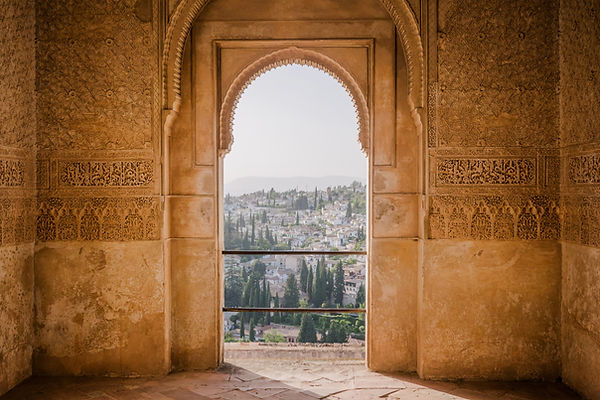
Studio
ARCHITECTURE
Reprise 1 of 4
Dearest Studio Friends,
Remember how much we love exploring architecture at Studio? Remember all of the shapes and forms of nature surrounding us? At Studio we often found these elements throughout the garden and in Prospect Park: pine cones, bark, sticks, branches, rocks, leaves, paths, beds of water, animals and insects, and the clouds and skyline just beyond the tips of the treetops. Let’s remember the many structures on Earth, and the motion and music of our world that inspires us to imagine and create as architects. At Studio we often played music, moved and danced, built our designs from various pieces, and used objects of all types
to display our ideas for architectural buildings.
CLICK THROUGH ARCHITECTURE GALLERY BELOW




The wonderful and infinite world of architecture consists of buildings, structures, and environments in which people live, play, and work.
Architecture is designing buildings for people to
live, play, and work in.
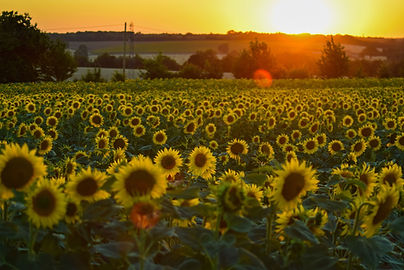

VOCABULARY
2D - Designing on a flat surface so that the design just has length and height. In 2D, or two-dimensional designs, the creation does not lift up off the paper so that you can touch and feel many sides. Drawings are 2D designs!
A chalk drawing on a flat city sidewalk is a 2D design.
INFINITE – Never ending and ongoing.
The billions of stars that fill the sky are infinite and seem to go on in
outer space forever.
ABUNDANT – Having a very full volume or amount.
A word used to describe when there is plenty of something.
The farm field was filled with an abundant garden of hundreds
and hundreds of sunflowers.
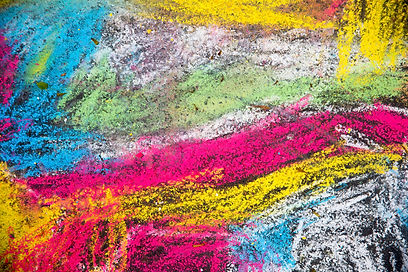
SIGN LANGUAGE:
Architect
https://www.signingsavvy.com/search/architect
Architecture
https://www.signingsavvy.com/sign/ARCHITECTURE/910/1
Building

DAY ONE
SHAPES OF THE WORLD
2D IMAGINING AND BUILDING
Look throughout your home, your street block and neighborhood, in books, and in nature. Look at buildings and homes that are near and far. You can find buildings and homes in books and magazines as well as in your neighborhood. Shapes are everywhere! They are infinite and abundant! What shapes have you found? Take pictures of these shapes, draw these shapes, and look at them closely.
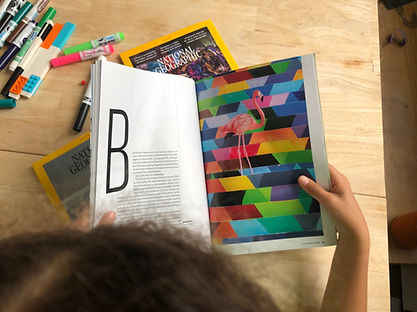

VOCABULARY
FORM – The shape and way that a particular
item or body appears.
The wood for the bannister needed to be cut in the form of a spiral,
which required a very specific tool.
As you explore these shapes in nature, buildings, and photographs, and inside and outside of your environment ask yourself, what are these shapes made of?
Maybe your shapes are made of:
Glass Wood Steel Paper Stone Rock Leaves Grass Fabrics Concrete Bricks Clouds
CLICK THROUGH TO SEE
SHAPES GALLERY BELOW




DAY TWO
ELEMENTS OF ARCHITECTURE
Architecture is an expansive world, made up primarily of an abundance of smaller shapes that come together in the overall design of bigger shapes. In architecture, shapes are designed both for their beauty—delighting our senses and bringing us joy—and their function, allowing us to easily use the parts of our home and live within it comfortably.
We start with the knowledge that shapes can be any form at all.
VOCABULARY:
ELEMENTS - Parts of a whole that are very important to its make-up.
Shapes are some of the main elements of architecture
that go into designing a building.
All throughout the world there are lines, curves, spirals, and angles to be found everywhere in nature, in the make-up of buildings, and all different types of environments. Lines, curves, spirals, and angles are also main elements of architectural design. Today, you will focus on finding lines, curves, spirals, and angles wherever you can in your home, books, and outside. When you find these elements, you can take a picture of them and/or draw them.
You might even want to create your own original ideas about these elements by expanding on your drawing of them. Whatever you create and find, take your finger and run it across the curve that you find, the lines that you see, and the spirals and angles that move, climb, and turn this way and that way. As you trace these forms with your finger, say their names aloud!
For instance, you can say, "The curve of the chair!"
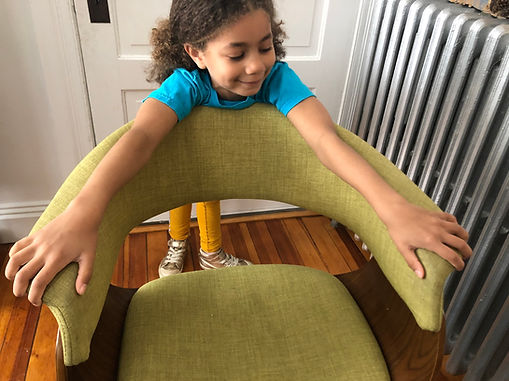

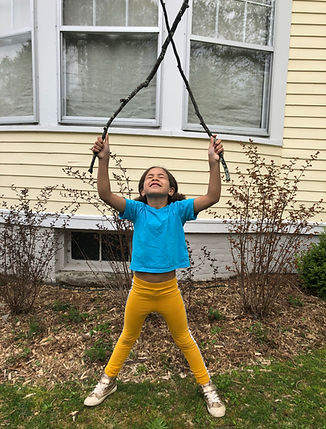
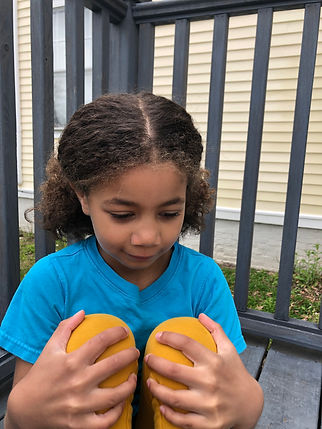


DAY THREE
MORE ELEMENTS OF ARCHITECTURE
Watch your mind and creative life grow through these projects. Throughout all of your explorations at home with your family and with your teachers, thinking architecturally will be a great tool to bring so many more of your ideas and plans to life, and to achieve your dreams.
VOCABULARY:
MIND EYE'S - The part of a person's mind that imagines and sees creatively.
The ideas for the building project first came into her mind's eye as she was resting and her eyes were closed.
TEXTURE - The way a surface or object feels, appears, or comes together.
The texture of the tree bark is scratchy, rough, and hard.
All throughout the world there are colors, textures, and patterns to be found everywhere in nature, the make-up of buildings, and all different types of environments. Colors, textures, and patterns are also main elements
of architectural design.
Today, you will identify colors, textures, and patterns in your environment and on objects. Think about why these colors, textures, and patterns might exist as they do and what feeling they give the object or the environment. When you look at the color, texture, or pattern, what do you find interesting or exciting about the way it looks? Does it make you feel a certain way? How do the textures you’ve found feel under your fingertips?
When you find these elements, you can take a picture of them and/or draw them. From your mind's eye you might even want to create original designs with your own colors, textures, and patterns that you imagine or see in your mind. Think about how you could change or switch around the colors, textures, and patterns of a space or object to make it feel or look differently. Also, as you create and identify these elements, name their details and features aloud.
For instance, you can say, "The texture of the bubble wrap looks bumpy but is also sleek and smooth."

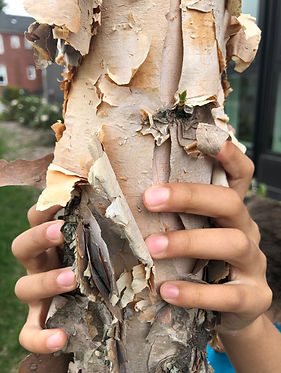

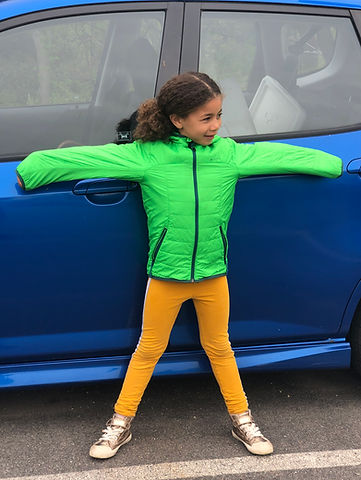
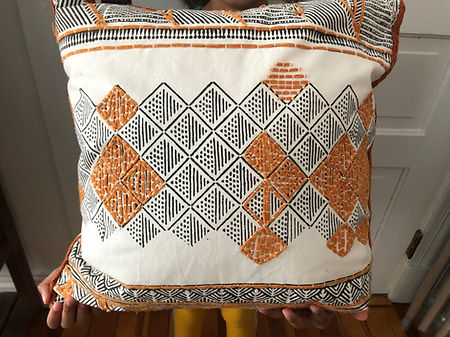




DAY FOUR
ARCHITECTURAL SPACE AND BALANCE
Other big ideas and elements of architecture are related to the open space in or around a building.
VOCABULARY:
FUNCTION – The specific purpose for which a thing is made.
The function of a chair is to allow a person to sit. The functions of a table are many, including providing a place for someone to put a plate of food when eating.
NEGATIVE SPACE
An architectural building has negative space inside and out of it. It is the space within the building that does not hold objects or windows or other features. It is the space outside of the building like the sky and area in the distance that is not a part of the building itself but still is seen when observing the building. Can you find the negative space of your home, of a building, or of an environment? Look for space that looks empty compared to an object.
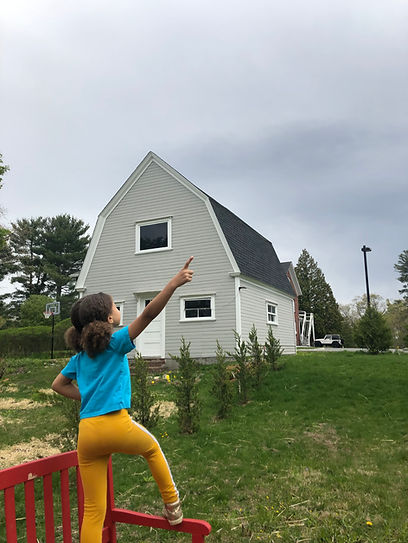
SYMMETRY
Architects must create buildings to balance upon a foundation. As they design, they use symmetry, which is an equal display and arrangement of building pieces, to create a balanced design. Think of a butterfly with the body in the center, and wings that are the same on either side. That is an example of symmetry. The butterfly looks even and balanced. Where do you see symmetry in your environment and in nature? How is furniture designed to offer symmetry and to function for people to use it?


CONTRAST
Sometimes you might notice a detail of design that looks very different from the other elements nearby. This is called contrast. If two objects show contrast, that means that they look very different, sometimes almost opposite from each other. As you look around at your environment, where do you see contrast in color, light, and shapes? For example, a large brown dog sitting next to a small, bright blue bird would be a contrast in size, color, and shape. Remember when we explored shadows! Light and shadows are an example of how contrast can be expressed. Do any objects around you create shadows? This is one way to find contrast right away. Look for the contrast that is found in nature as well as in building designs. Contrast in buildings is often found in the color and textures that make up their design.
As you create and identify these elements, name their details and features aloud.
For instance, you can say, "You can see the contrast in the picture because the light from the window creates a very dark silhouette of a person."
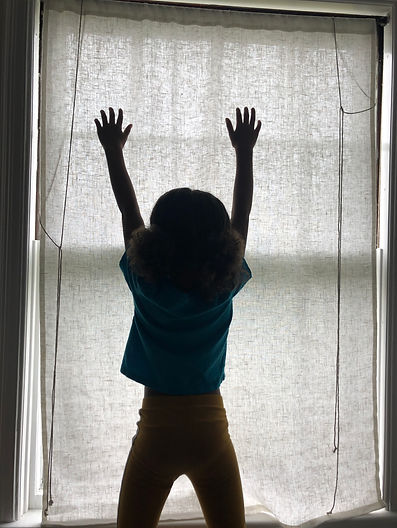
DAY FIVE
ARCHITECTURAL DESIGN
Record, document, sketch, & draw your ideas and creations!
Remember how strong and infinite your imagination is!
Draw as many shapes as you can on whatever kind of paper, cardboard, or fabric you can find; you can use newspaper, recycled paper, old gift wrap, bubble wrap, cardboard, or whatever else you would like to use.
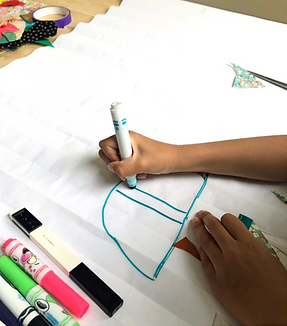
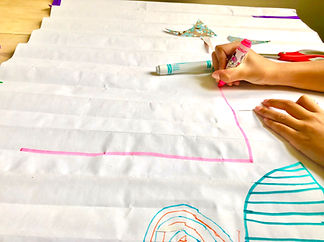
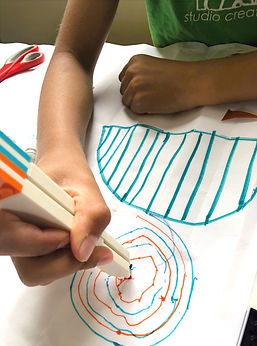
Cut out the shapes and spread them before you.
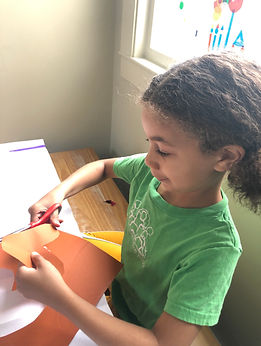
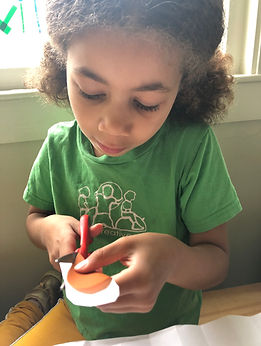

Put on some music! Allow your imagination to be free and create a piece of art made up of the combination of these shapes. Layer, compile, and blend these shapes however you decide to arrange them.
Think about the colors, textures, and patterns that already are a part of your design. Did more shapes emerge as you combined or compiled your original shapes? Color, paint, or draw more on your shapes if you choose. Where are the lines, curves, spirals, and angles? Where do you see contrast, symmetry, or negative space?
You can pursue this project and its steps many times over. How many differently shaped designs can you create? Keep identifying the architectural elements within them. Tape your designs to a wall or hang them up in your home.
Installing your ideas on an art line or art wall will continue to
inspire you in your creativity!



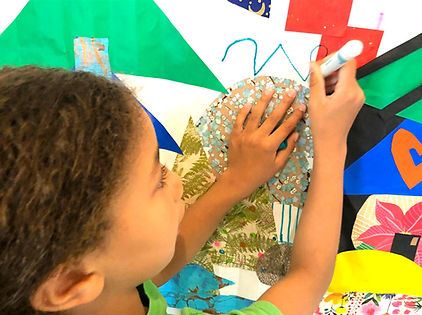
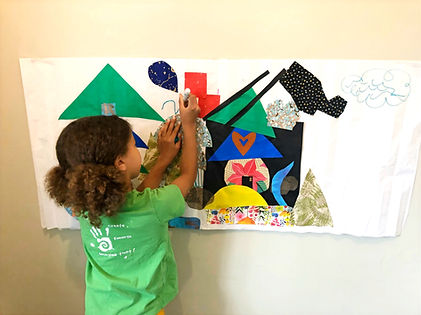
DAY SIX
MUSIC, MOVEMENT & BREATHING
MUSIC
CELLO SUITES &
JACQUELINE DU PRE
This week we will spotlight the musical composition of 17th century composer, Johan Sebastian Bach, The Cello Suites. Over the centuries these pieces have been played by many famous cellists, including Pablo Casals and Yo-Yo Mah. Yet in our musical explorations this week we will share the performance of cellist Jacqueline Du Pre's rendition of the Cello Suites. Each Suite has its own personality, its own mood, tempo, cadence and story. We can each interpret how the Suites make us feel and how they inspire us in our thinking and imagining. Architectural thinking and music enhance each other's meaning and power. When we draw, music inspires that motion and the visualizations that come to us.When we build, musical expression is enhanced: we can think of the music as being demonstrated in the design and shape of the building.
Architecture is music manifest.


Jaqueline Du Pre - Cello Suites
MUSIC WITH ANGUS
This week Angus explores different parts of architecture through his music. He shares how musical scales move high and low and low and high just like an arch of a structure. Music is also full of other kinds of lines and curves. Just like architecture is full of different shapes and designs, so is musical expresssion!
MOVEMENT:
Stand as though you are a building.
Stand tall in your structure, and feel your legs and body find a firm place on the ground. Plant your feet firmly on the foundation of the earth.
Slowly bend and move up and down, swinging your arms and allowing your body to rise and shorten, rise and shorten several times over. You are building up in your structure!
Next, stand tall and take your arms as high above your head as possible. Raise your arms, stretching up towards the sky as you push up off the tips of your toes. Stretch your fingers as high as possible, as if your building tower extended into the clouds.
Allow you arms to lower halfway, straight out to the sides of your body like airplane wings in a delicate symmetry. Your building is also widening and growing horizontally.
As you get ready to grow more in your structure, take a deep breath and bend your knees. Count to 3 slowly and then jump as high and as energetically as you can up towards the sky. You can shout, laugh, or sing as you jump and build, jump and build. You can exclaim, "I'm building!"




BREATHING:
As we design we can:
Breathe in remembering the shapes and colors that surround us. We can breathe out thinking of specific shapes and colors that we most like to imagine within our mind's eye.
Breathe in envisioning the patterns and textures in nature. Breathe out thinking of those patterns and textures that we most like to imagine within our mind's eye.
Breathe in reflecting on the lines and curves that make up our world, and the ones that humankind make. Breathe out thinking of those lines and curves that we most like to imagine within our mind's eye.
Breathe in seeing the angles that are a part of the landscapes of our world. Breathe out thinking of those angles surrounding us that we most like to imagine within our mind's eye.
Breathe in and out 5 times each - slowly, deeply, peacefully. Imagine the symmetry and balance that is a part of the world around us, as well as the parts of the world that do not hold symmetry and balance but are equally as strong.


DAY SEVEN
THINKING LIKE AN ARCHITECT
Remember, thinking architecturally is the perfect way to exercise our imagination. Thinking architecturally is not just for the purpose of designing and building homes. Thinking architecturally helps us to strengthen all of our imaginative powers!
To think like an architect:
· Believe in your imagination! Believe that an idea in your mind's eye can be created and
become a real structure for people to use.
· Know that the world is made up of an infinite amount of shapes everywhere,
in our towns and cities as well as in nature.
· Be curious about and fascinated by the way that people live, work, and play, exploring
how they can live more easily and enjoyably within buildings and other structures.
· Believe that structures and buildings can be
designed to be magical and inspiring!
· Slow down and notice the world around you, making time to observe
and be inspired by its shapes, elements, and designs.
· Find as many shapes as you can when you observe your inside and outside environments.
Draw and decorate your ideas and
imaginings as much as possible!
